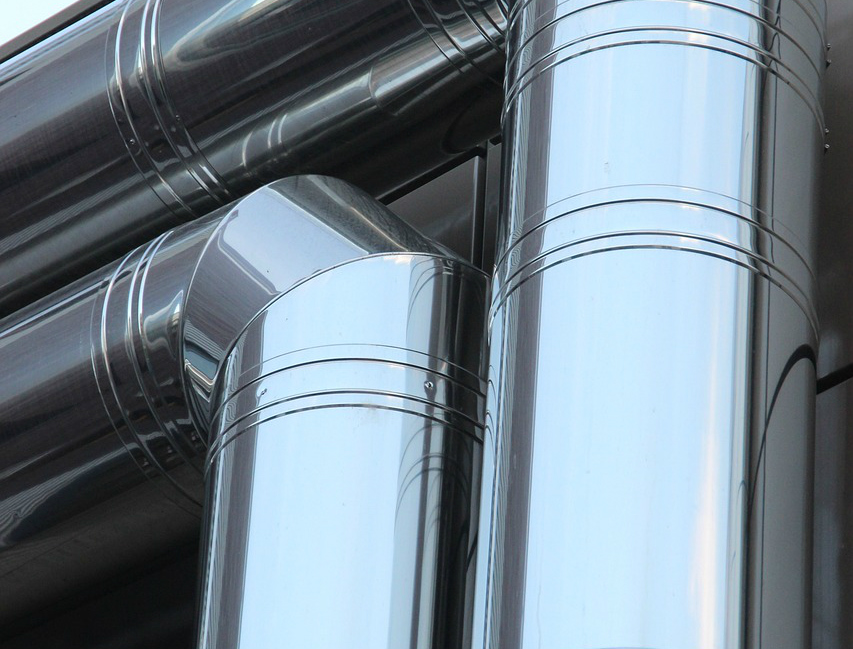Commercial Feature
The Role of Stainless Steel Pipes in Modern Manufacturing: A Comprehensive Guide

In the vast landscape of modern manufacturing, stainless steel pipes stand as essential components, facilitating the smooth flow of materials and fluids across various industries. Their significance lies not only in their durability and versatility but also in their ability to withstand harsh environments and corrosive substances. This comprehensive guide delves into the intricacies of stainless steel pipes, exploring their composition, manufacturing processes, applications, and future trends.
Understanding Stainless Steel Pipes
Stainless steel, renowned for its resistance to corrosion and high strength-to-weight ratio, forms the backbone of modern industrial infrastructure. Due to their exceptional properties, stainless steel pipes, in particular, play a pivotal role in diverse applications. These pipes are typically composed of iron, chromium, nickel, and other alloying elements, which impart superior corrosion resistance, durability, and hygiene.
Different grades of stainless steel are tailored to meet specific application requirements, ranging from the austenitic 300 series for general-purpose use to the duplex and martensitic grades for more demanding environments. Furthermore, stainless steel pipes come in various forms, including seamless and welded, each suited for distinct manufacturing processes and applications.
Manufacturing Processes of Stainless Steel Pipes
The manufacturing of stainless steel pipes involves intricate processes aimed at ensuring structural integrity, dimensional accuracy, and surface finish. Raw materials, primarily stainless steel coils or sheets, undergo rigorous inspection and preparation before fabrication.
Fabrication methods for stainless steel pipes include seamless and welded techniques. Seamless pipes are manufactured through extrusion or piercing of a solid billet, resulting in a continuous cylindrical shape with uniform properties throughout. On the other hand, welded pipes are formed by welding together stainless steel strips or plates, followed by shaping and sizing.
Quality control measures are paramount at every stage of manufacturing to detect defects, ensure material homogeneity, and maintain dimensional tolerances. Advanced techniques such as non-destructive testing and ultrasonic inspection are employed to uphold stringent quality standards.
Key Characteristics and Performance Factors
Stainless steel pipes exhibit several key characteristics that contribute to their widespread adoption in modern manufacturing processes. Foremost among these is their unparalleled corrosion resistance, stemming from the protective oxide layer that forms on their surface when exposed to oxygen. This corrosion resistance makes stainless steel pipes ideal for conveying corrosive fluids and operating in harsh environments.
Additionally, stainless steel pipes boast exceptional strength and durability, enabling them to withstand high pressures, temperature extremes, and mechanical stresses. Their inherent strength-to-weight ratio makes them particularly suitable for structural applications where weight reduction is critical.
Moreover, stainless steel pipes offer excellent resistance to temperature variations, making them suitable for both cryogenic and high-temperature applications. This thermal stability ensures reliable performance across a wide range of operating conditions.
Hygiene and cleanliness are paramount in industries such as food and pharmaceuticals, where strict regulatory standards govern product safety. Stainless steel pipes, with their smooth surface finish and inert nature, fulfill these requirements by preventing bacterial growth and contamination.
Ease of fabrication and installation further enhances the appeal of stainless steel pipes, reducing manufacturing lead times and installation costs. Their malleability allows for complex shapes and configurations, enabling seamless integration into existing infrastructure.
Applications in Modern Manufacturing
The versatility of stainless steel pipes finds expression in a myriad of applications across various industries. In the oil and gas sector, stainless steel pipes are utilized for transporting crude oil, natural gas, and refined petroleum products, thanks to their corrosion resistance and structural integrity.
In chemical processing plants, stainless steel pipes play a crucial role in conveying aggressive chemicals, acids, and solvents without fear of corrosion or contamination. Their inert nature ensures the purity of chemical reactions and prevents product degradation.
In the food and beverage industry, stainless steel pipes are indispensable for conveying potable water, beverages, and food products while maintaining strict hygiene standards. Their smooth surface finish and resistance to corrosion make them ideal for food contact applications.
Automotive manufacturing relies on stainless steel pipes for exhaust systems, fuel delivery, and structural components, where durability and corrosion resistance are paramount. Similarly, in the pharmaceutical industry, stainless steel pipes are used to convey pharmaceutical-grade liquids, powders, and gases, ensuring product purity and compliance with regulatory standards.
Construction and infrastructure projects leverage stainless steel pipes for plumbing, HVAC systems, structural support, and architectural elements. Their aesthetic appeal, durability, and longevity make them a preferred choice for both residential and commercial applications.
Advancements and Innovations
The evolution of stainless steel pipe technology continues unabated, driven by innovation and demand for enhanced performance and sustainability. Emerging manufacturing techniques, such as additive manufacturing (3D printing), offer new possibilities for producing complex geometries and customized components with minimal material waste.
Sustainable practices in stainless steel pipe production, such as recycling and energy-efficient manufacturing processes, are gaining traction to minimize environmental impact. Additionally, the integration of stainless steel pipes with Industry 4.0 technologies, such as IoT sensors and predictive maintenance, promises to revolutionize asset management and optimize operational efficiency.
Conclusion
In conclusion, stainless steel pipes occupy a central role in modern manufacturing, offering unmatched performance, durability, and versatility across a broad spectrum of applications. As industries embrace innovation and sustainability, stainless steel pipes will continue to play a pivotal role in shaping tomorrow’s infrastructure.
 News / Emma May Ball U-turns on ‘accessible’ half-shift staffing28 April 2024
News / Emma May Ball U-turns on ‘accessible’ half-shift staffing28 April 2024 News / Activists target Trinity chapel over Israel links26 April 2024
News / Activists target Trinity chapel over Israel links26 April 2024 News / Students protest Trinity open day over Israel ties27 April 2024
News / Students protest Trinity open day over Israel ties27 April 2024 Comment / Why we should all work a part-time job26 April 2024
Comment / Why we should all work a part-time job26 April 2024 News / Fitz students face ‘massive invasion of privacy’ over messy rooms23 April 2024
News / Fitz students face ‘massive invasion of privacy’ over messy rooms23 April 2024





